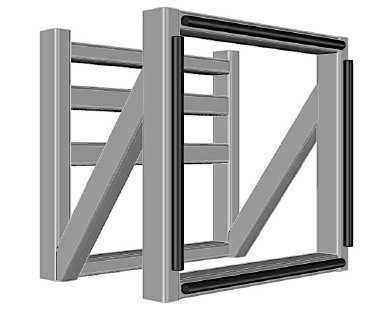1 M.A.Sc. Candidate, Department of Civil Engineering, McMaster University, Hamilton, ON, L8S 4L7, Canada, wybengbm@mcmaster.ca
2 Associate Professor, Martini, Mascarin and George Chair in Masonry Design, Department of Civil Engineering, Department of Civil Engineering, McMaster University, Hamilton, ON, L8S 4L7, Canada, eldak@mcmaster.ca
3 Associate Professor, Joe NG/JNE Consulting Chair in Design, Construction and Management in Infrastructure Renewal, Department of Civil Engineering, McMaster University, Hamilton, ON, L8S 4L7, Canada, taitm@mcmaster.ca
4 Technical Expert, AMEC NSS, Power and Process Americas. waleed.mekky@amec.com
ABSTRACT
The enhancement of arching action to masonry behavior has long been recognized. In the current study, the behavior of reinforced concrete block walls supported on four sides, to enforce two-way arching, is experimentally investigated. The walls were subjected to different levels of scaled-distances representing a wide range of threat levels within the wall’s impulsive regime. The uniformity of the blast pressure and impulse was ensured by a specially designed test enclosure that also diminished the wrap-around and clearing effects. In general, the results demonstrated the beneficial effect of two-way arching on the flexural behavior of reinforced masonry walls under impulsive loading. The results are expected to contribute to better understanding of masonry wall response to blast loads and to the growing masonry blast performance database. The generated results are expected to contribute to the masonry design provisions in future edition of the recently introduced Canadian Standards CSA S850-12 “Design and Assessment of Buildings Subjected to Blast Loads”.
KEYWORDS: arching, blast loading, blast scaling, experimental testing, out-of-plane, reinforced masonry
601.pdf



